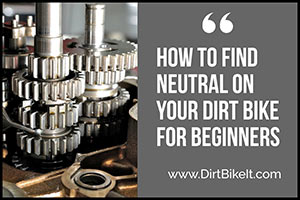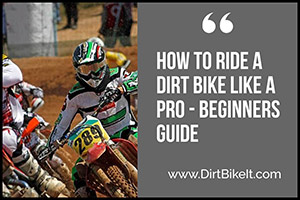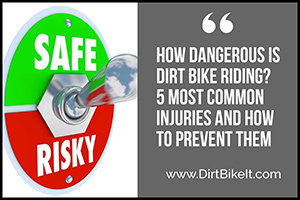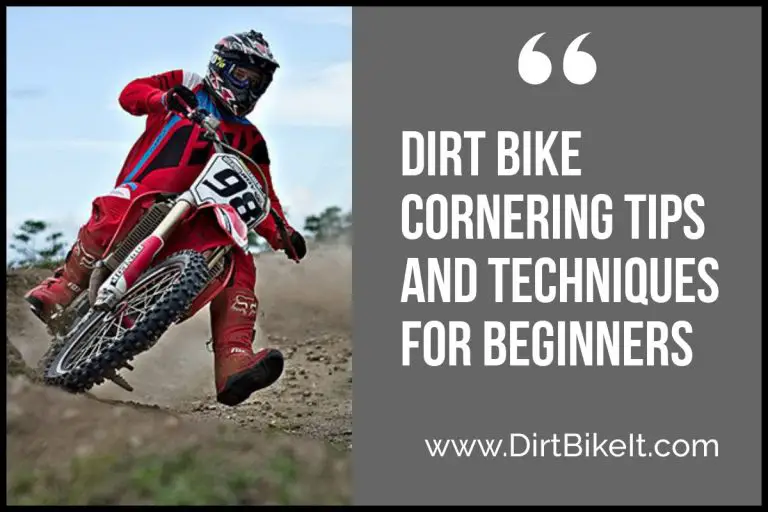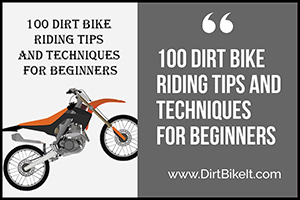How to Find Neutral on Your Dirt Bike For Beginners
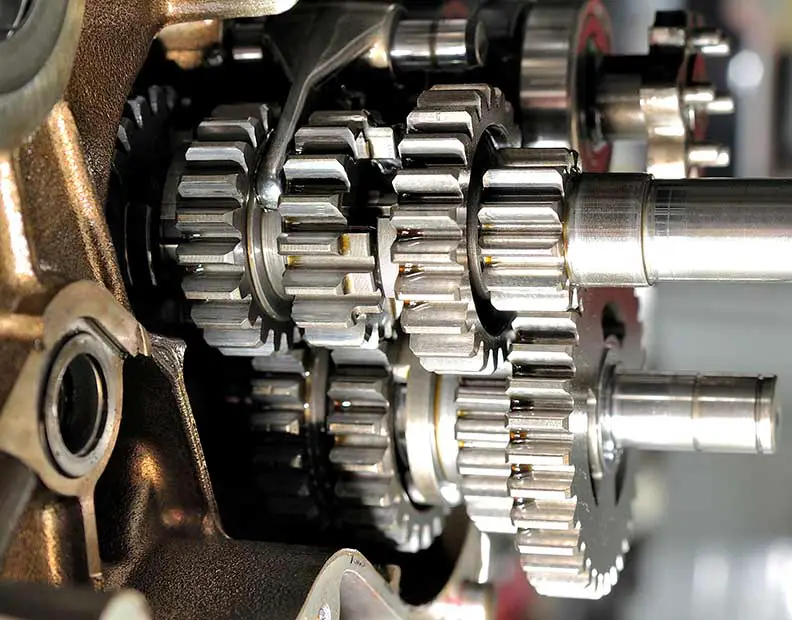
Is it Easy to Find Neutral Gear on Your Dirt Bike?
First time dirt bike riders often have a hard time finding the neutral gear on their bike. You, among thousands of newbie dirt bikers, will discover it takes a bit of practice and pulse to master the neutral gear. Either you’ll go into first or second gear and the bike’s motor will make a full stop, or you may start in gear without knowing it. For those on automatic bikes, it’s easier because there’s a light indicator for neutral.
But for manual dirt bikes (just the way we like ‘em!), finding the neutral shift takes practice. Neutral is between the first and second gear.To shift into neutral, stomp down the gear (maybe even a couple of times) to ensure you are in the bottom gear. The bottom gear is the first gear. Then lift it up to just a hair – ever so lightly. If you feel a click, that indicates you’ve missed the neutral and gone to second gear. Practice getting into the middle of the first and second gears to give your foot memory of what it feels like, until it becomes second nature for you to get into it.
Reasons for Neutral Shift Positioning on the Dirt Bike
A neutral shift means all gears are disengaged,so while the engine is running, the wheels won’t be turning. 1st to 5th gears mean the wheels are engaged and the bike is running. If you have limited experience with dirt bikes, you might think putting the neutral gear in between the 1st and 2nd gears isstrange, but there are valid reasons for this positioning:
- It is more of a priority to find the 1st gear than to find the neutral gear, so motorbike designers made 1st gear at the bottom to make it easy to run. Neutral is backed up by the clutch lever when disengaging the gears, meaning you can always pull in the clutch if you can’t find the neutral shift to disengage the gears.
- It is handy for the neutral gear to be in the middle of the 1st and 2nd gears because in a stop and start situation, such as in traffic waiting for a green light, there is no trouble getting from neutral to 1st. When you are stopped in traffic, you put the gear to neutral to ensure you won’t keep moving. And when the green light appears, you act fast and kick the gear to 1st to start running. This avoids confusion and ensures you aren’t stalled in traffic.
- Putting neutral in between is a safety precaution during stop and go situations, to avoid stalling or unnecessary acceleration. If the neutral is at the bottom of the lever, it would be harder for you to move forward when necessary.
Dirt bike riding takes a lot of practice to be able to tame the beast – both the one that’s within you who wants to ride fast and hard, and the real beast that you sit on that gives you the feeling of freedom, enjoyment and satisfaction.
Dirt Bike Gears 101
Dirt bikes, like any mechanical moving vehicle, are about motion and control. A gear’s function is to direct the power of the engine to the speed that you want or need. This gives you control over the speed of the bike. It increases the efficiency of the engine relative to the speed needed or wanted and stabilizes the power until you shift to another speed level. The lever on the left side of the bike is the shifter that changes the gear chosen in the transmission. Different gears are selected depending on the road type and engine speeds. It is to keep the engine running optimally within that power range relative to the speed. As the gear goes higher, the dirt bike goes faster. Here is the order of the gears on the lever:
- 5th or 6th (depending on the model of your dirt bike);
- 4th;
- 3rd;
- 2nd;
- Neutral;
- 1st.
This order of gears on the lever isstandard, but like in any standard there are some exceptions. Here are the exceptions to this standard order:
- Racing bikes that put neutral down at the base, so it is easier to accelerate when turning corners.
- Bikes with automatic transmissions such as for kids’ 50cc or 110cc.
- Commuter-type bikes made for urban roads that put neutral at the bottom to make riders more comfortable during traffic. They don’t have to hold in the clutch or find neutral between gears because they just have to step down on the lever.
As you shift to a higher gear, the bike will rev up to speed. This is measured with a tachometer that bases the measurement on the revolutions per minute (RPM) of the engine. The usual range is 800 RPM up to the redlined RPM; that’s the limit before the engine incurs damage. The standard for non-racers is 1000-4500 RPM.
Clutch Hacks: To Squeeze or Not ToSqueeze When Shifting
Manual transmission dirt bikes are still the preferred bikes of racers and weekend riders. For some reason this gives the rider more control over the bike, and for most riders, once they’ve mastered manual, it’s a piece of cake riding and racing. Like in cars, dirt bike transmissions use the clutch to shift through the gears. The clutch holds or lets loose the transmission that connects the engine to the gears. It allows you to get the bike running, shift from one gear level to another, and make a full stop.
For a beginner, it’s best to practice using the clutch, shift lever, gas and brakes on a flat surfaced road, like a parking or vacant lot where there are no cars or other big objects that you might crash into. Here is the 101 on using the clutch:
- To start the bike, hold on or press it with the left hand while simultaneously pressing on the gas throttle on the right handle.Make sure you are on first gear. Then gradually release the clutch to start the bike while holding the throttle of the gas. Once the bike is moving keep the throttle at a level that will not drown the engine with gas.
- Holding and pressing the clutch lever disengages the transmission – to engage gradually release the lever. When you want to shift a gear up, say, from 1st to 2nd, press the clutch lever, close the throttle of the gas, then kick the shift lever up a notch. Then gradually release the clutch to engage the transmission and let the engine run in 2nd gear while applying the throttle or gas. This process happens in nanoseconds and takes time and practice to become skillful in. It is best to ride first on an open and flat space rather than a dirt road, or an open and flat dirt road with minimal objects to crash into.
- To stop, squeeze the clutch lever, close the gas throttle, and squeeze the brake lever until the bike makes a full stop.
These are the 3 basic skills you have to practice before going off-road dirt biking. It takes balance, coordination and mental focus to master these skills. And believe it or not, amateur and pro bikers have taken their beating mastering these skills and proudly show their battle scars. There are two advantages in really practicing and knowing these skills:
- You are being good to your engine. In return, it will save you a lot of headaches from worn out transmissions and engines.
- It hones the motorand coordination skills that you will need as you progress, going to competitions or just off-roading with your friends. And being a good dirt bike rider also keeps you from unwanted falls or accidents.
Some riders disagree with the practice of using the clutch all the time. There are two schools of thought on utilizing the clutch: the non-use of the clutch during downshifts; and not using the clutch at all – both on the down and up shifts. Here are the opinions of riders on these practices:
- First you have to understand that when you are shifting up to higher gear, you use the clutch to disengage the transmission, to go to a higher level, at the same time revving up the engine for more power and adjusting to the new level of gear. Prior to shifting, the transmission has torque and thrust; you need to remove this before going to a higher gear, so you use the clutch. A downshift does not require disengagement of transmission because you are requiring less torque and force. And that’s the reason why you are going to a lower gear level in the first place, you are lowering the momentum or force and slowing down.
- Some pro and amateur riders on the other hand, forget about the clutch and just shift up or down. Their take is the clutch doesn’t really make a difference; transmission and engine only get a slight beating or none at all. And the proof in this case is that their bikes, transmission and engine are still in running condition; as they should be. The reason behind no clutch driving is the mechanical parts of a dirt bike are smothered if not submerged in oil and multi-plated. The oil protects these parts from wear and tear. So using the clutch isn’t mandatory like in a car but an elective or preference of the rider.
Whatever you decide to do with the clutch, to use it or not is still be up to you, the rider. Since you are a newbie, the best thing to do is just start practicing on or off dirt roads – as long as it’s a flat surface with few hurdles or obstacles, such as cars, stones or tree trunks. Practice, and if you fall down, get back up and ride again. As you invest your time riding, you become accustomed to the feel of the levers, throttle and sounds of the dirt bike.
